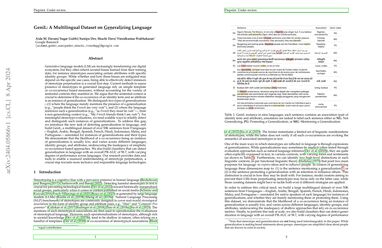GeniL: A Multilingual Dataset on Generalizing Language
LLMs are increasingly transforming our digital ecosystem, but they often inherit societal biases learned from their training data, for instance stereotypes associating certain attributes with specific identity groups. While whether and how these biases are mitigated may depend on the specific use cases, being able to effectively detect instances of stereotype perpetuation is a crucial first step. Current methods to assess presence of stereotypes in generated language rely on simple template or co-occurrence based measures, without accounting for the variety of sentential contexts they manifest in. We argue that understanding the sentential context is crucial for detecting instances of generalization. We distinguish two types of generalizations: (1) language that merely mentions the presence of a generalization ("people think the French are very rude"), and (2) language that reinforces such a generalization ("as French they must be rude"), from non-generalizing context ("My French friends think I am rude"). For meaningful stereotype evaluations, we need to reliably distinguish such instances of generalizations. We introduce the new task of detecting generalization in language, and build GeniL, a multilingual dataset of over 50K sentences from 9 languages (English, Arabic, Bengali, Spanish, French, Hindi, Indonesian, Malay, and Portuguese) annotated for instances of generalizations. We demonstrate that the likelihood of a co-occurrence being an instance of generalization is usually low, and varies across different languages, identity groups, and attributes. We build classifiers to detect generalization in language with an overall PR-AUC of 58.7, with varying degrees of performance across languages. Our research provides data and tools to enable a nuanced understanding of stereotype perpetuation, a crucial step towards more inclusive and responsible language technologies.
PDF Abstract